Clean, safe drinking water isn't a luxury—it's a necessity for every household. After spending fifteen years in the bathroom and kitchen fittings industry, I've watched water filtration technology transform from bulky countertop units to sleek, integrated faucet systems that deliver purified water with a simple turn of the handle. This evolution has made clean water more accessible than ever, but choosing the right system requires understanding both the benefits and limitations.
Let me share what I've learned from countless installations, customer feedback, and real-world performance to help you make an informed decision about faucets with built-in water filtration.
Understanding Water Filtration Faucet Technology
Modern faucets with built-in filtration combine two essential functions into one fixture—regular water delivery and advanced purification. These systems work by routing tap water through specialized filters before it reaches your glass, removing contaminants while maintaining convenient access to unfiltered water for tasks like dishwashing.
The technology has matured significantly over the past decade. Today's systems use multiple filtration methods, each designed to tackle specific water quality issues that affect Indian households. The most common technologies include activated carbon filters that excel at removing chlorine and improving taste, ceramic filters that trap bacteria and sediment, and reverse osmosis systems that provide the highest level of purification by eliminating heavy metals and dissolved solids.
What makes these faucets particularly practical is their dual-function design. A simple lever or switch lets you choose between filtered water for drinking and cooking, and unfiltered water for cleaning tasks. This smart approach saves your filter cartridge from unnecessary wear during activities that don't require purified water, extending its lifespan and reducing replacement costs.
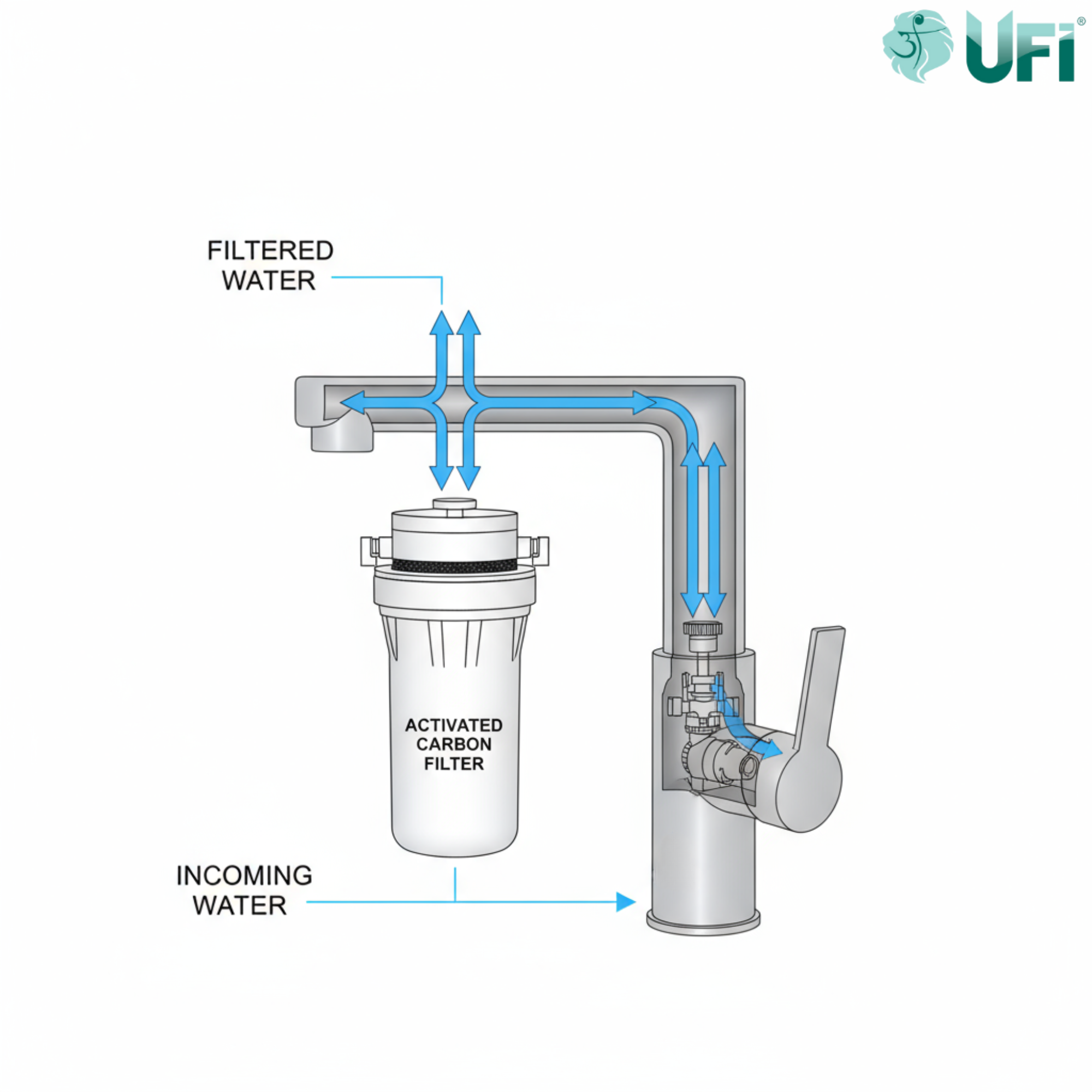
The Major Advantages of Filtration Faucets
The primary benefit that draws homeowners to these systems is the dramatic improvement in water quality. These faucets effectively remove chlorine, lead, mercury, and various organic compounds that compromise both safety and taste. For families concerned about water safety—especially those with young children or elderly members—having purified water directly from the tap provides invaluable peace of mind.
The convenience factor cannot be overstated. Instead of waiting for a pitcher to filter water or installing a separate filtration unit, you get instant access to clean water whenever you need it. This ease of use naturally encourages better hydration habits across the family, since drinking water becomes as simple as turning on the tap.
From a financial perspective, these faucets deliver substantial long-term savings. While the upfront investment exceeds standard faucets, you eliminate ongoing expenses for bottled water or pitcher filter replacements. A typical family spending ₹2,000-3,000 monthly on bottled water can recover the system cost within 12-18 months, then continue saving for years to come.
The environmental benefits align with growing awareness about plastic waste. Every day, millions of plastic bottles end up in landfills and waterways across India. By switching to a filtration faucet, your household can eliminate hundreds of plastic bottles annually, contributing meaningfully to environmental conservation without sacrificing convenience.
Space efficiency represents another practical advantage, particularly valuable in compact urban kitchens and bathrooms. By integrating filtration into the faucet itself, you free up valuable counter space otherwise occupied by filter pitchers or standalone purification units. The streamlined design creates a cleaner, more organized appearance while maintaining full functionality.
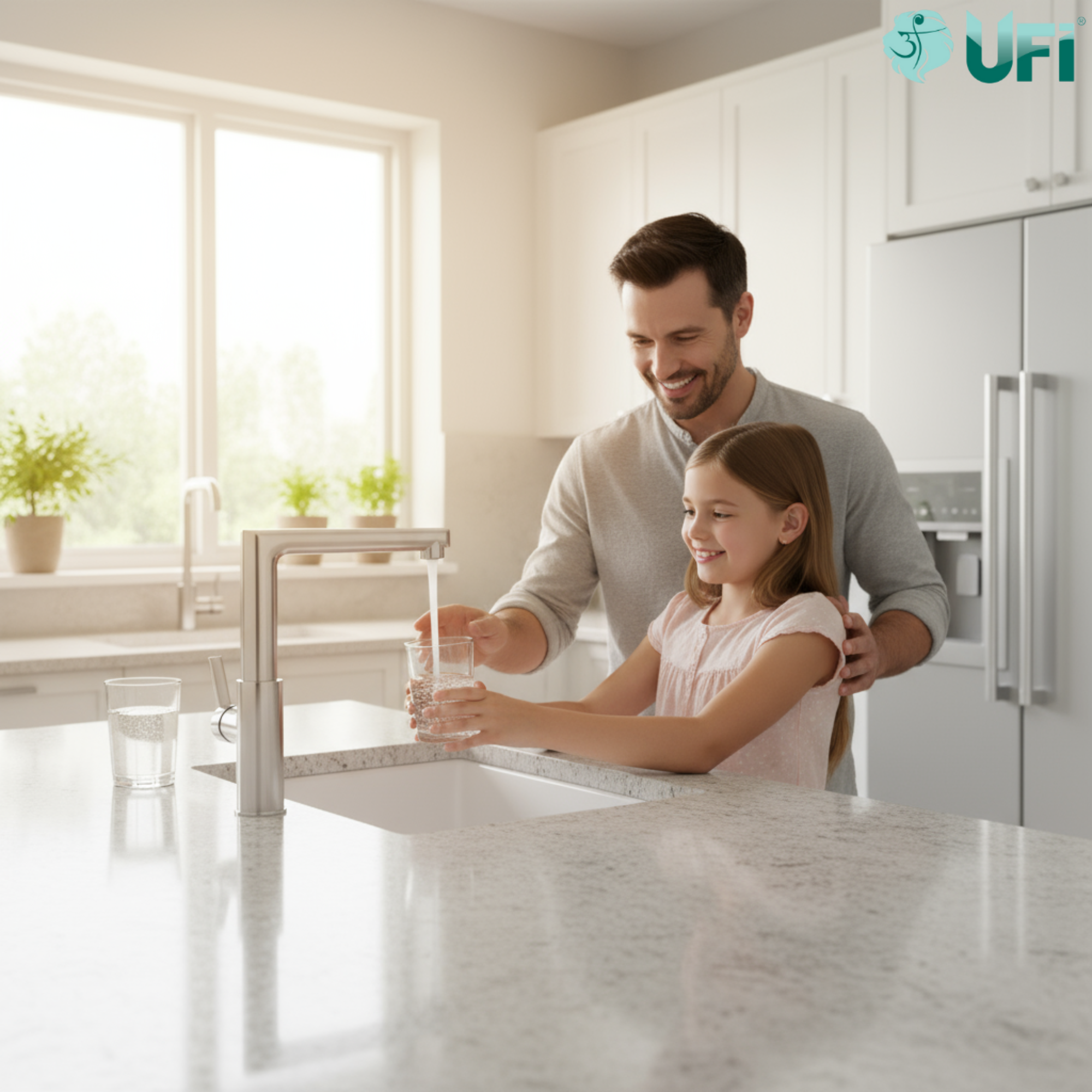
Important Considerations and Limitations
The higher initial cost presents the most immediate consideration for many homeowners. Quality faucets with built-in filtration typically cost 2-3 times more than standard faucets, with premium models reaching even higher price points. However, this investment needs context—when calculated against ongoing bottled water expenses and the value of improved health, the economics often favor filtration faucets.
Filter replacement and maintenance requirements demand regular attention. Most systems need new filters every 3-6 months depending on water quality and usage volume. Filter costs vary from ₹800-2,500 per replacement, adding to your ongoing expenses. Additionally, proper maintenance including periodic cleaning prevents mineral buildup that can reduce filtration efficiency over time.
Filtration capacity limitations mean these systems work best for typical household drinking and cooking needs rather than high-volume commercial applications. If your household has exceptionally high water consumption or specific contamination issues requiring comprehensive treatment, a whole-house filtration system might serve you better than a single-point faucet filter.
Installation complexity varies significantly between models. Some faucets with basic filtration systems can be installed with standard plumbing skills, while others particularly those with separate filter housings or reverse osmosis components—require professional installation. This professional service adds ₹1,500-4,000 to your total investment, depending on your existing plumbing configuration and local labor rates.
Water pressure reduction affects some filtration faucets, particularly those using multi-stage filtration or reverse osmosis technology. The filtration process inherently restricts flow to some degree, which may impact tasks requiring strong water pressure like quickly filling large cooking pots. Modern systems minimize this issue through improved design, but it remains worth testing before purchase if water pressure matters greatly to your household.
Choosing the Right Filtration Faucet for Your Home
Start by assessing your specific water quality concerns. Different regions face different contamination issues—some areas struggle with excessive chlorine, others with heavy metals or bacterial contamination. Testing your water helps identify which filtration technology addresses your actual needs rather than over-investing in unnecessary purification capacity.
Filter replacement costs deserve careful evaluation beyond the initial purchase price. Research the specific filter model required for your chosen faucet, including both replacement frequency and per-filter cost. A faucet costing ₹2,000 less initially but requiring ₹500 more per year in filters becomes more expensive over its 10-year lifespan.
Installation requirements should match your skills and budget. If you're comfortable with basic plumbing and your sink has standard configuration, many filtration faucets install quite straightforwardly. However, systems requiring modifications to existing plumbing or connection to separate filter housings often justify professional installation to ensure proper function and prevent leaks.
Water pressure compatibility matters for daily satisfaction. If your home has low water pressure common in upper floors of apartment buildings choose filtration systems specifically designed for low-pressure performance. Conversely, homes with high pressure benefit from systems incorporating pressure regulators to prevent excessive wear on filter components.
Design and finish should complement your existing bathroom or kitchen aesthetics. Filtration faucets come in various styles from contemporary minimalist to traditional ornate designs, with finishes ranging from chrome and brushed nickel to matte black and gold tones. Since this faucet becomes a focal point of your sink area, selecting a design that enhances your space adds value beyond mere functionality.
Certification and quality standards provide assurance of genuine performance. Look for products tested against NSF/ANSI standards, particularly NSF 53 for health-related contaminant reduction and NSF 42 for aesthetic improvements like taste and odor. BIS (Bureau of Indian Standards) certification confirms compliance with Indian quality requirements.
Different Filtration Technologies Explained
Activated carbon filtration represents the most common technology in faucet-mounted systems. These filters use specially treated carbon with microscopic pores that trap chlorine, volatile organic compounds, pesticides, and particles affecting taste and odor. Carbon block filters—where activated carbon is compressed into a solid block—provide superior performance compared to granular activated carbon by forcing water through a denser filtration medium.
Ceramic filtration excels at removing bacteria, protozoa, and sediment through physical barrier filtration. The ceramic material contains tiny pores typically 0.2-0.5 microns in diameter that prevent microorganisms and particles from passing while allowing water molecules through. These filters offer excellent durability and can often be cleaned and reused multiple times before replacement becomes necessary.
Reverse osmosis provides the most comprehensive purification by forcing water through a semi-permeable membrane under pressure. This process removes up to 99% of dissolved solids, heavy metals like lead and mercury, fluoride, and even some pharmaceutical residues. However, reverse osmosis systems typically require more complex installation with separate storage tanks and generate wastewater during the filtration process.
Multi-stage filtration combines different technologies to address a broader range of contaminants. Common configurations include an initial sediment pre-filter, followed by activated carbon for chemical removal, then a final stage for specific contaminants like lead or bacteria. Systems like these provide more comprehensive protection but require more frequent maintenance and higher replacement filter costs.
Ion exchange technology specifically targets heavy metals and water hardness by swapping harmful ions like lead or calcium for harmless ones like sodium or potassium. Many premium filtration faucets incorporate ion exchange resins alongside activated carbon to provide both chemical and metal removal in a compact filter cartridge.
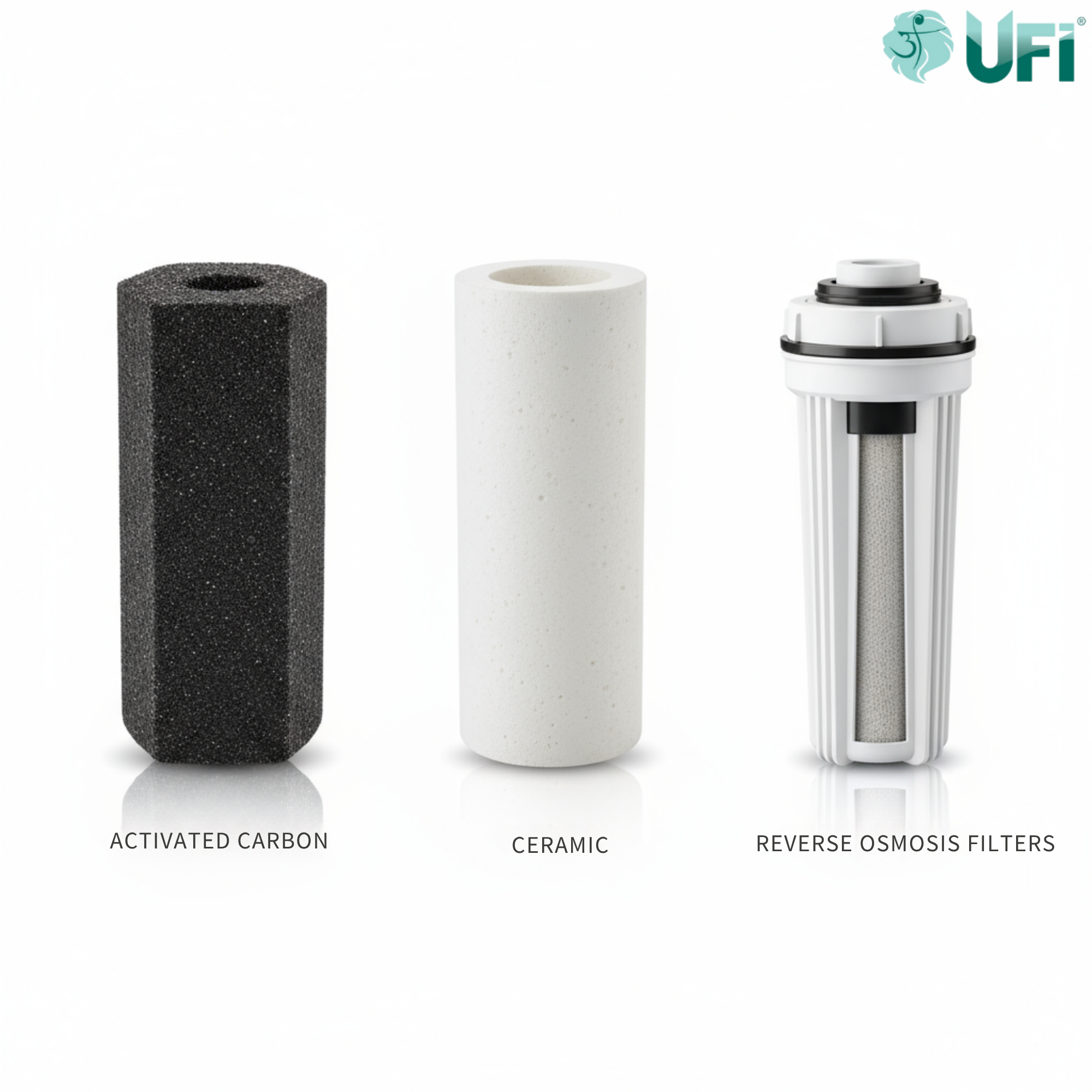
Installation Process and Requirements
Before installation begins, verify that your sink can accommodate the filtration faucet. Most systems require a mounting hole, which existing sinks typically provide for the current faucet. Some designs need an additional hole for a separate filtered water spout, which may require drilling through stainless steel, granite, or other sink materials.
Gather necessary tools including adjustable wrenches, basin wrenches for tight spaces under the sink, screwdrivers, and plumber's tape for ensuring leak-free connections. Having everything ready before starting prevents frustrating mid-installation trips to the hardware store.
The installation typically involves shutting off water supply valves under the sink, removing your existing faucet, and preparing the mounting surface. The new filtration faucet then mounts through the sink hole with washers and nuts tightened from below, similar to standard faucet installation.
Connecting the water supply requires attaching the cold water line to the filter housing inlet, then running a separate line from the housing outlet to the faucet. Many systems use compression fittings that simply hand-tighten without requiring soldering or specialized tools. The filter housing mounts to the cabinet wall under the sink in a location allowing easy access for future filter changes.
After completing all connections, slowly turn on the water supply while checking carefully for leaks at every connection point. Tighten any fittings showing moisture, but avoid over-tightening which can crack plastic components or strip threads. Flush the new filter according to manufacturer instructions—typically running water through for 5-10 minutes to remove carbon fines and air from the system.
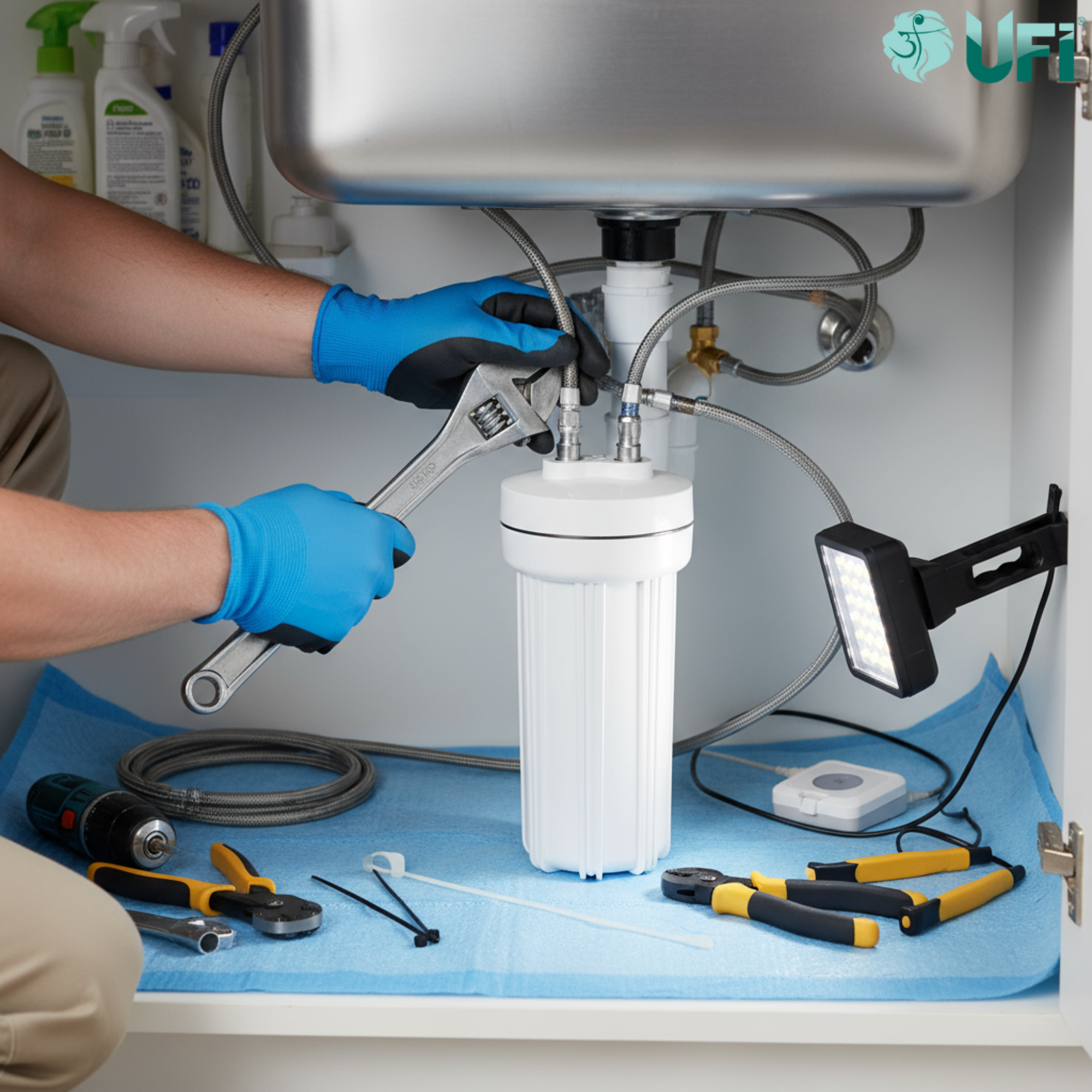
Maintenance Best Practices for Longevity
Regular filter replacement according to manufacturer schedules maintains optimal water quality and protects your health. Most systems include indicator lights or timers signaling when replacement is due, but keeping a calendar reminder provides backup assurance. Never exceed recommended replacement intervals, as exhausted filters may release trapped contaminants back into your water.
Cleaning the faucet aerator every 2-3 months prevents mineral buildup that restricts flow and reduces efficiency. Simply unscrew the aerator from the spout, soak it overnight in white vinegar to dissolve deposits, rinse thoroughly, and reinstall. This simple maintenance takes minutes but significantly extends faucet lifespan and maintains water pressure.
Inspect all connections periodically for signs of moisture, corrosion, or wear. Catching small leaks early prevents water damage to cabinets and floors while avoiding water waste that increases utility bills. Tightening a loose fitting takes seconds but saves thousands in potential repair costs.
Monitor water flow and taste for changes indicating filter exhaustion or system problems. Reduced flow may signal a clogged filter requiring replacement, while taste changes suggest the filter has reached capacity. Addressing these signs promptly maintains water quality rather than waiting for scheduled replacement dates.
Keep spare filters in stock so you're never without purified water when replacement time arrives. Purchasing filters in multi-packs often reduces per-unit cost and ensures you always have the correct model readily available. Store spare filters in a cool, dry location away from direct sunlight to preserve their effectiveness.
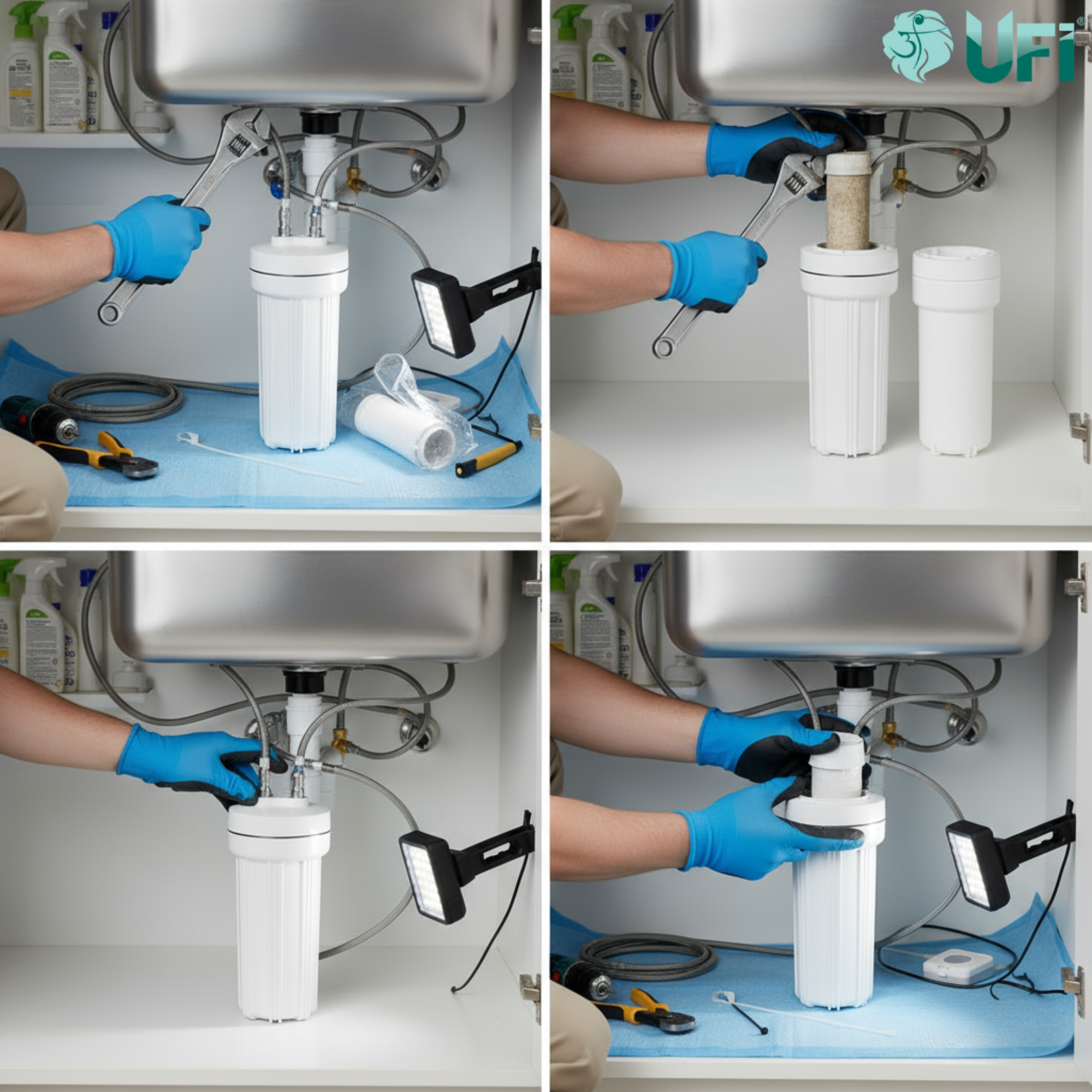
Making the Investment Decision
Evaluate your household's water consumption patterns before purchasing. A family drinking primarily tap water for beverages and cooking benefits enormously from filtration faucets, while households already using bottled water for everything see the most dramatic cost savings. Calculate your current monthly water-related expenses including bottled water, pitcher filters, or delivery services to establish a baseline for comparison.
Consider the health value beyond pure economics. Exposure to contaminants like lead particularly affects children's development and overall family wellness. While difficult to quantify in rupees, the health benefits of consistently clean water carry significant value that justifies premium investment in quality filtration systems.
Factor in convenience and lifestyle improvements. The time saved not purchasing and carrying bottled water, along with the ease of instant access to filtered water, enhances daily life in ways that spreadsheets don't capture. For busy families, this convenience often proves as valuable as the financial savings.
Research warranty coverage and manufacturer support. Reputable brands offering 5-10 year warranties demonstrate confidence in their product quality and provide protection for your investment. Strong customer service ensures you can get help with installation questions, troubleshooting, and obtaining replacement parts throughout the faucet's lifespan.
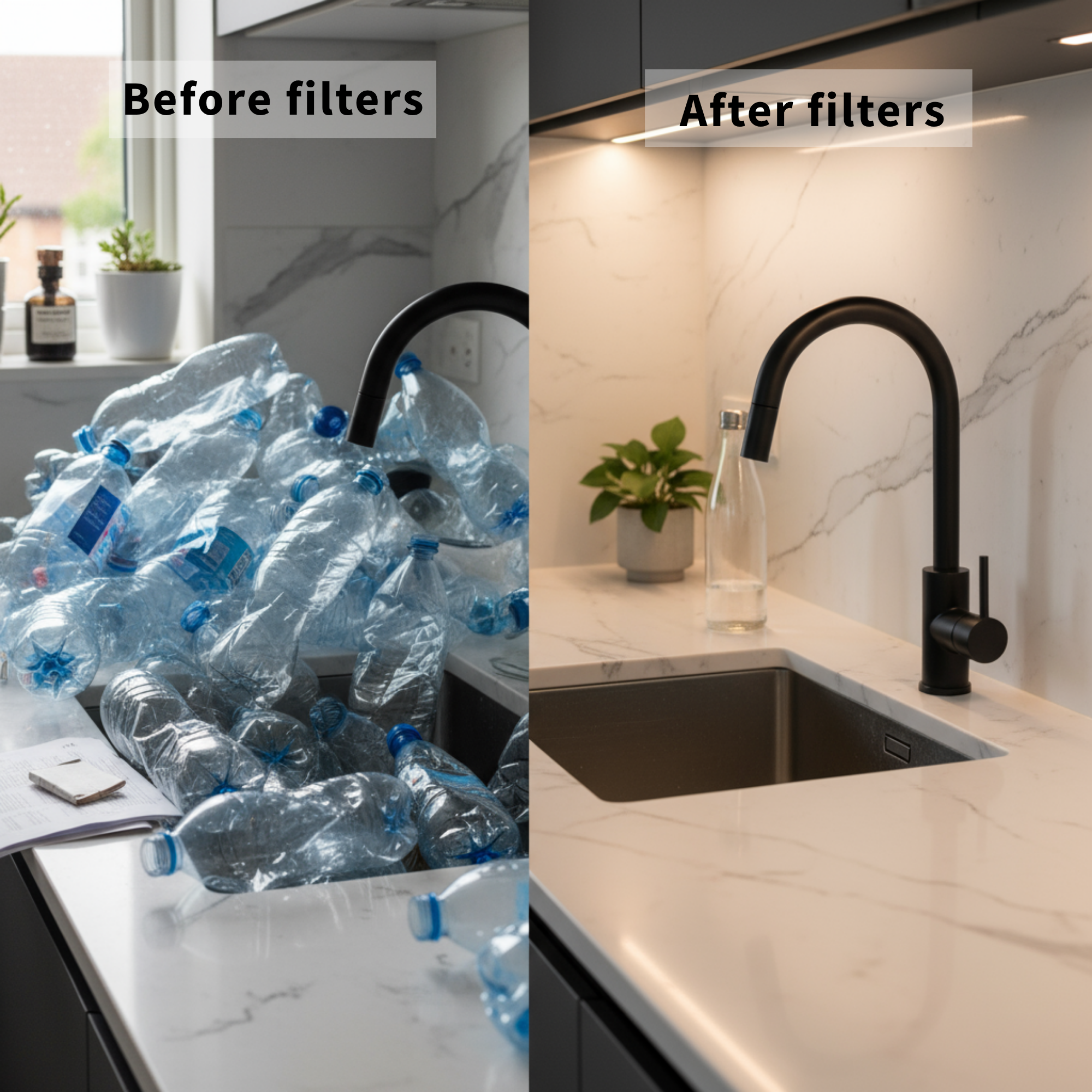
Bathroom Applications for Filtered Water Faucets
While kitchens represent the primary application for filtration faucets, bathrooms increasingly incorporate this technology for families prioritizing water quality throughout their homes. Bathroom filtered water faucets provide purified water for teeth brushing, face washing, and medication consumption without requiring trips to the kitchen.
The bathroom installation presents unique considerations compared to kitchen applications. Space under bathroom sinks tends to be more limited, requiring compact filter housing designs. Additionally, bathroom aesthetics often call for faucets matching other fixtures in finish and style, so coordination becomes important.
Parents of young children particularly appreciate bathroom filtration faucets since kids can safely drink water during teeth brushing without supervision. This independence teaches good habits while ensuring water quality regardless of which sink they use.
For homes with multiple bathrooms, strategic placement of filtration faucets in the master bathroom and children's bathroom provides family-wide access to clean water without the expense of filtering every tap. This balanced approach optimizes both cost and convenience.
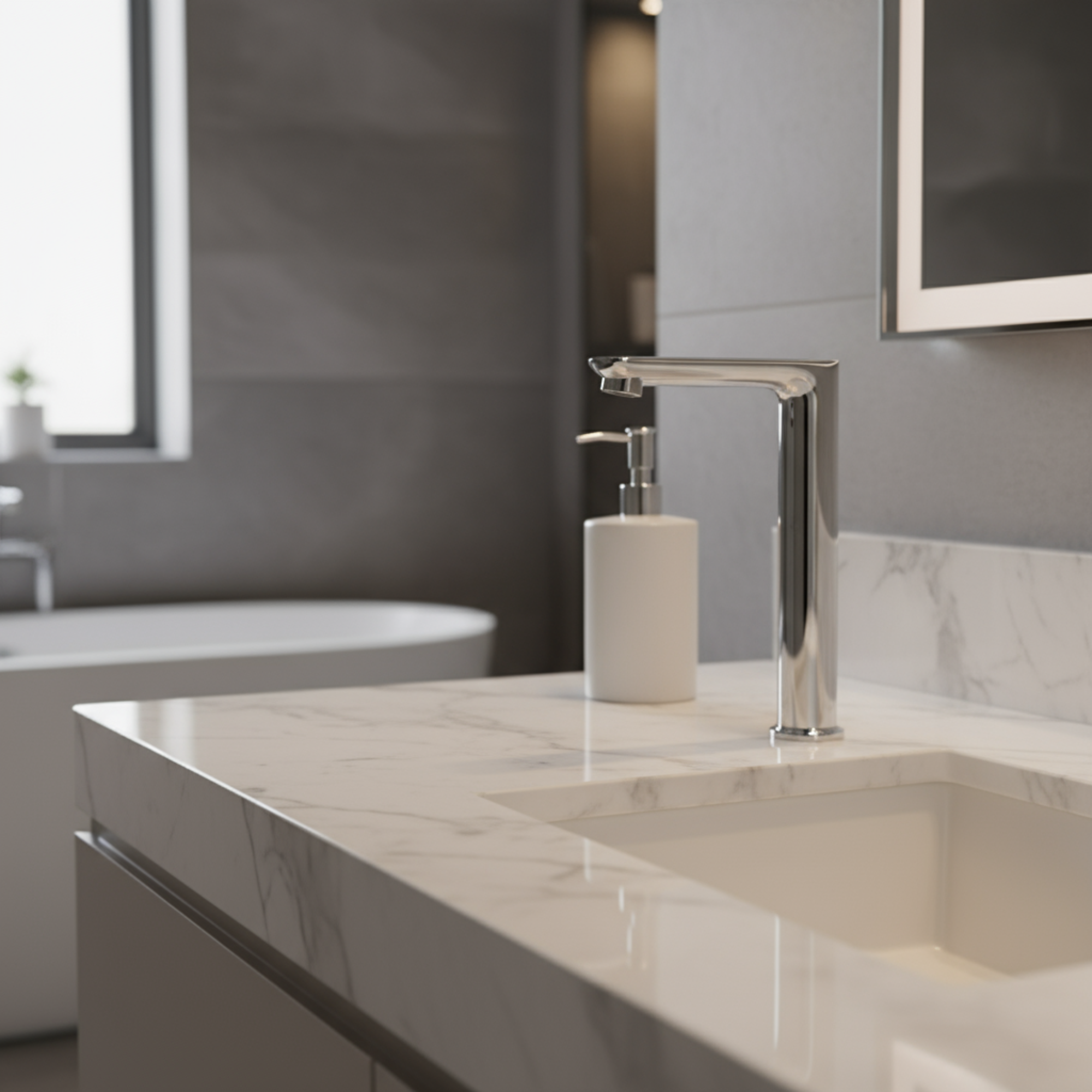
Addressing Common Questions and Concerns
Many homeowners wonder whether filtration faucets remove all contaminants from tap water. The honest answer is that no single filtration method removes everything—different technologies target different contaminants. For comprehensive purification addressing a wide range of issues, multi-stage systems or reverse osmosis provide the broadest protection.
Water pressure concerns frequently arise during the research phase. Modern filtration faucets minimize flow reduction through improved filter design and optimized water pathways. Most users find the slight pressure decrease unnoticeable during drinking and cooking tasks, though it becomes more apparent when filling large vessels.
The question of professional versus DIY installation depends on both your skill level and the specific system complexity. Basic faucet-mounted filters typically install as easily as standard faucets, while systems with separate filter housings or reverse osmosis components benefit from professional installation ensuring proper function and warranty compliance.
Filter lifespan varies based on water quality and usage volume, but manufacturers provide rated capacities typically ranging from 600-1,200 liters per cartridge. Households with particularly hard or contaminated water may need more frequent replacements than those with better source water quality.
Compatibility with existing plumbing worries some homeowners, but most filtration faucets work with standard plumbing connections found in typical Indian homes. Systems designed for the Indian market account for common pressure ranges and pipe sizes, though verifying specifications before purchase prevents compatibility issues.

The Future of Water Filtration Technology
Emerging technologies continue advancing filtration capabilities while reducing system complexity and cost. Smart filtration faucets now incorporate digital displays tracking filter life, water consumption, and even contaminant levels in real-time. These innovations help homeowners optimize filter replacement timing and monitor water quality without guesswork.
Longer-lasting filter media reduces both replacement frequency and ongoing costs. New activated carbon formulations and advanced membrane materials extend filter life to 12-18 months in some premium systems, cutting annual maintenance requirements substantially.
Eco-friendly filter materials made from sustainable and biodegradable components address environmental concerns about filter disposal. Some manufacturers now offer recycling programs for used filters, recovering valuable materials while preventing landfill waste.
Integration with home automation systems allows filtration faucets to connect with smart home platforms, sending filter replacement reminders to your phone and even automatically ordering replacements when needed. This seamless approach ensures you never run out of filtered water due to forgotten maintenance.
Final Thoughts from a Professional Perspective
After fifteen years working with bathroom and kitchen fittings, I've watched filtration faucets evolve from niche products to mainstream essentials for health-conscious families. The technology has matured to the point where quality systems deliver reliable performance, genuine health benefits, and meaningful cost savings over their lifespan.
The decision ultimately depends on your household's specific needs, water quality concerns, and budget considerations. For families concerned about water safety, those spending significantly on bottled water, or households seeking convenient access to clean water throughout the home, filtration faucets represent an excellent investment.
Choose systems from reputable manufacturers offering genuine certifications, comprehensive warranties, and readily available replacement filters. This approach ensures you receive the water quality improvements you're paying for while avoiding frustration with products that fail prematurely or require expensive proprietary filters.
Remember that water filtration faucets complement rather than replace good water management practices. Regular testing of your source water, proper maintenance of your filtration system, and staying informed about local water quality issues all contribute to ensuring your family enjoys the cleanest, safest water possible. With the right system properly maintained, you'll enjoy years of convenient access to purified water that supports your family's health and wellbeing.
Uttam Fitting India ( UFI-India )

